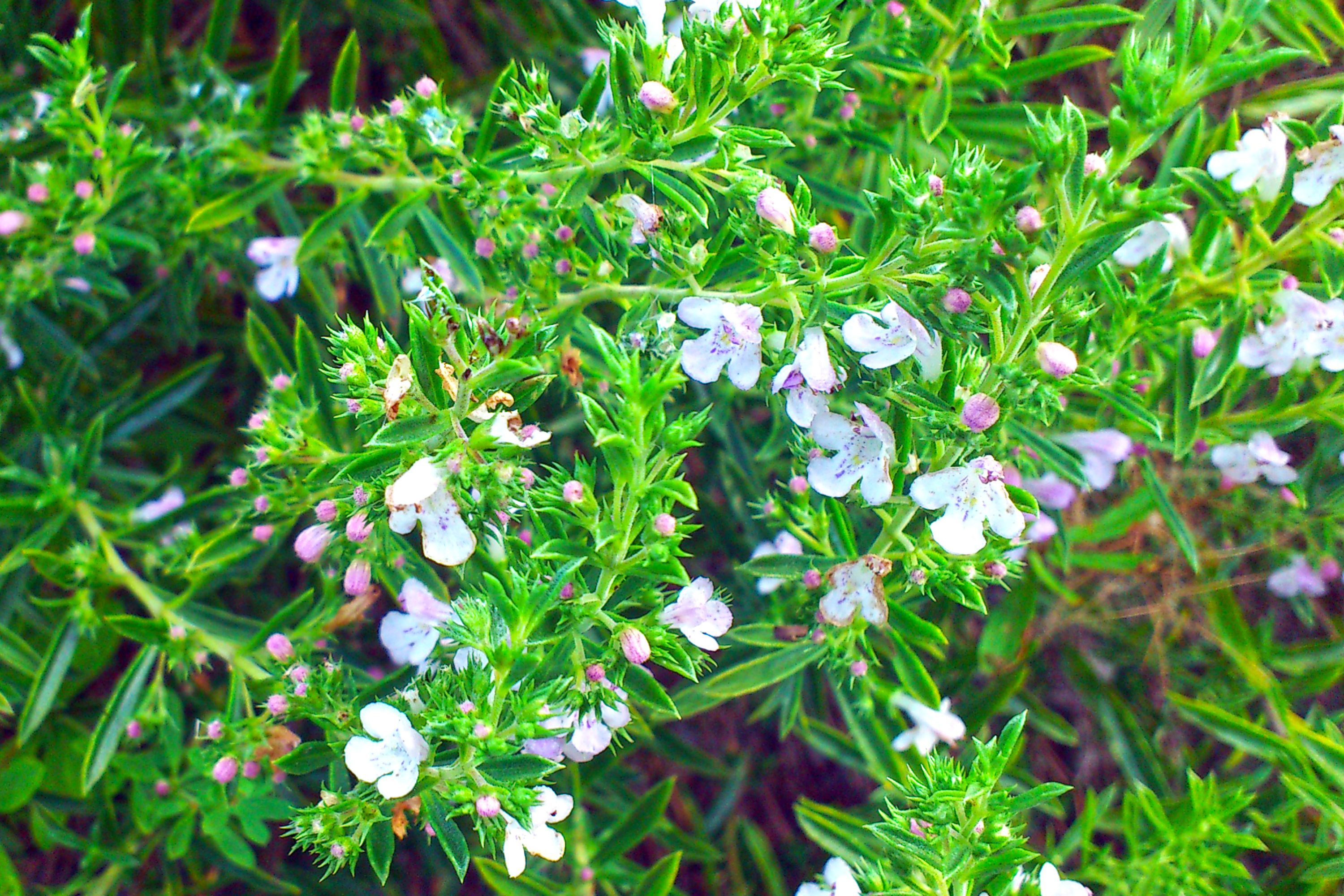"Winter savory "
(Satureja montana)

Description
Satureja montana (winter savory or mountain savory), is a perennial, semi-evergreen herb in the family Lamiaceae, native to warm temperate regions of southern Europe, the Mediterranean, and Africa. It has dark green leaves and summer flowers ranging from pale lavender, or pink to white. The closely related plant, summer savory (Satureja hortensis L.) is an annual plant. It grows to between 10 and 40 cm (4 and 16 in) tall. The leathery, dark green leaves are opposite, oval-lanceolate, (or needle-like, 1–2 cm long and 5 mm broad. The flowers appear in summer,between July and October, and range from pale lavender or pink to white.The flowers are smaller than summer savoury flowers.It contains carvacrol,a monoterpenoid phenol. The herb was first published by Carl Linnaeus in his book Species Plantarum on page 568 in 1753. The Latin specific epithet montana refers to mountains or coming from mountains. Also commonly known as 'mountain savory'. Satureja montana is native to temperate areas between Europe, the Mediterranean, and Africa.It has been naturalised in Great Britain. It can be found growing in old walls, on dry banks and rocks on hillsides,or rocky mountain slopes. Usually on calcareous, or alkaline soils. There is evidence of its use about 2000 years ago by the ancient Romans and Greeks. Easy to grow, it makes an attractive border plant for any culinary herb garden. It requires six hours of sun a day in soil that drains well.In temperate climates it goes dormant in winter, putting out leaves on the bare stems again in the spring – do not cut the plant back, all those stems which appear dead will leaf out again. It is hardy and has a low bunching habit. It can be used within a herb garden as an edging plant.
Taxonomic tree:







